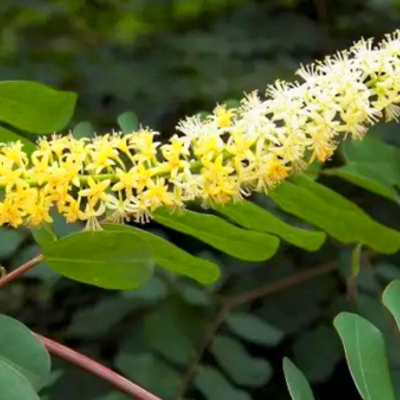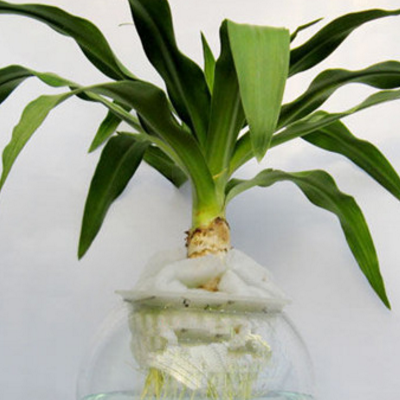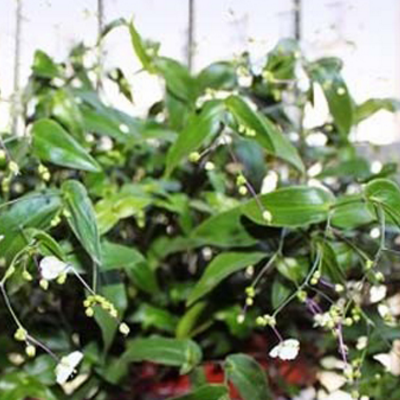How to propagate the Culture method of Sea Red Bean
Sea red beans, do not underestimate this sea red beans, can not only be used to look so simple, this sea red beans have medicinal value, what is the breeding method of sea red beans? How to reproduce sea red beans:

The culture method of sea red bean:
1. Temperature management
Sea adzuki bean is native to subtropical and tropical regions, and the environment with high temperature and humidity is more suitable for its growth and is not cold-resistant, so it requires high temperature in winter and can not survive the winter safely in areas with frost. It needs to wrap plastic film or straw on the trunk to keep it warm.
2. Lighting management
Sea red bean trees do not have strict requirements for light, that is, they like the sunny environment and tolerate half-shade, so they should not be exposed to the sun at the seedling stage, otherwise they are easy to become dehydrated and wilted, and can be treated with shade properly.
3. Water and fertilizer management
Potted sea red bean needs to pay attention to its water fee management, in the pot to add organic fertilizer as the base fertilizer, in the usual maintenance process, but also to carry out appropriate water and fertilizer management to promote plant growth.
Spring, summer and autumn are the peak growing season of sea red beans, fertilization and watering should be carried out indirectly, the interval period is about 3 days, the interval period should be shortened appropriately during sunny or high temperature weather, and the interval period of cloudy and rainy days or low temperature weather should be longer, without stagnant water.
Winter is the dormant period of sea red bean, during this period, to reduce the application of fertilizer, one fertilizer and two times of water can be managed as a cycle, the interval period is about one week.
4. Pruning
Sea red beans should be pruned in winter, because winter plants will enter a dormant or semi-dormant period, which consumes less nutrition, so thin, dead and overdense branches should be pruned in order to grow new branches in the coming year.
The propagation method of sea red bean:
First, sowing and breeding of sea red beans:
1. Seed selection of sea red bean
The most important thing to sow seeds is to select the seeds harvested in the same year, which are full, without defects or deformities, and free from diseases and insect pests. Soak the seeds in hot water for about 60 ℃ for a quarter of an hour to disinfect. Then disinfect the substrate used for sowing and expose the substrate to the sun.
2. Sowing Seafood
Sow the seeds of adzuki bean on the surface of the substrate and cover the seeds with a 1-2 cm thick matrix. after sowing, the sowing matrix can be drenched with a sprayer, and then watered when the surface of the basin soil is slightly dry, but pay attention to the strength of watering not to wash the seeds up.
3. Management of sea red bean after sowing
If sowing in winter or early spring, pay attention to anti-freezing, you can use plastic film to wrap the flowerpot to create microclimate heat preservation and moisture; after the seedlings are unearthed, the film should be opened in time to adapt to the external environment, pay attention to refining seedlings, otherwise the seedlings will grow very weak; when the seedlings grow 3 or more true leaves, they can be transplanted.
Second, cutting propagation of sea red bean.
1. Preliminary preparation for cutting of sea red bean.
Late spring and early autumn is a good time for sea red bean cutting, cuttings can choose the same year's twigs, can also choose last year's old branches for cutting; cutting substrate can choose nutritious soil or river sand, peat soil and other materials.
2. Cutting of sea red bean
After selecting the cutting branches, cut them into 10 cm long segments, each with at least 3 leaf nodes. It should be noted that the upper notch is cut flat about 1 cm above the uppermost node, and the lower notch is obliquely cut about 0.5 cm below the lowermost node, and the upper and lower incisions are flat.
This is the end of the introduction on the breeding methods and breeding methods of sea red beans. Come and raise a few plants as soon as possible.
Culture methods and matters needing attention of sea red bean Chinese name sea red bean
Latin name Adenanthera pavonina
Don't call it peacock bean, red bean, Acacia bean.
The plant kingdom.
Phylum angiosperm
Dicotyledonous class
Subclass primitive perianth subclass
Mu Qiang Wei Mu
Suborder Rosa
Leguminosae
Subfamily mimosa subfamily
Mimosa tribe
It belongs to the genus Prunus.
Grow sea red beans
Distributed in India, Malaysia, Java
Symbolize love, marriage, peace
Adenanthera pavonina is a small deciduous tree with a height of 5-10m. Twigs puberulent. Seeds suborbicular to elliptic, 5-8mm long, 4.5-7mm wide, bright red, glossy. This variety, which was formerly named the original variety, differs from the original variety in that its pedicel and calyx are glabrous, calyx 0.8-1mm long, petals oblong-lanceolate, 3-4.5mm long, pods wider, 13-16mm wide, not too curly before dehiscence, seeds suborbicular, 8.3mm-8.5mm long, 7.1mm wide.
1. Morphological characteristics.
The pea has bipinnately compound leaves with a short stalk; petiole and leaf rachis puberulent, eglandular; pinnae 3-5 pairs, leaflets 4-7 pairs, alternate, oblong or ovate, 2.5-3.5cm long, 1.5-2.5cm wide, apex obtuse, puberulent on both surfaces.
Racemes solitary in leaf axils or arranged in panicles at the top of branches, pubescent; flowers small, white or yellowish, fragrant, shortly pedicellate; calyx less than 1mm, golden pilose with pedicel; petals 5, lanceolate, 2.5-3mm, glabrous, base slightly connate; stamens 10, as long as or slightly longer than Corolla; ovary pilose, almost sessile, style filiform, stigma small.
Pods narrowly oblong, twisted, 10-20cm long, 1.2-1.4cm wide, dehiscent with convoluted petals; seeds suborbicular to ellipsoid, 5-8mm long, 4.5-7mm wide, bright red, glossy. The florescence is from April to July. The fruit period is from July to October.
2. Distribution of producing areas
Originated in the tropics, Myanmar, Cambodia, Laos, Vietnam, Malaysia, Indonesia, China. It is distributed in Fujian, Taiwan, Guangdong, Hainan, Guangxi, Guizhou, Yunnan and other places in China. Most of them are born in gullies, by streams, in forests or cultivated in gardens.
3. Growth habits
Like warm and humid climate, like light, slightly shade-resistant, strict requirements on soil conditions, like the sandy loam with deep, fertile and good drainage.
The culture method of "glacier ancient tree" yew and the appreciation of yew bonsai
Taxus has a very broad development prospect in landscaping and indoor bonsai. For example, high-grade bonsai made from rare yew trees have been sold for 300000 yuan per pot in Beijing, Shanghai, Shenzhen and other places, becoming an upstart in urban greening and home beautification. It is vividly called a precious "cash cow".
"Ancient Glacier Tree"-- Taxus
[plant archives]-
English name: Taxus
Scientific name: Taxus chinensis
Alias: yew, red cypress pine
Family: Taxaceae of Taxaceae
Genus: Taxus Taxus
Land: widely distributed as high as 900 meters above sea level, southern Gansu, western Hubei and even Sichuan.
Morphological features: Taxus is an evergreen tree, and the trees planted can be up to 14 meters high. Branchlets turn yellowish green or reddish brown in autumn; winter bud scales dorsally rounded or with obtuse ridges; falcate leaves, dialletic, 1.5-3cm long, wider than other Taxus, with pointed and small ends, with two yellow at the bottom of leaves; flowers axillary, dioecious, female flowers only with one ovule, hypothalamic scales several; oblate-ovate seeds, each with an inconspicuous ridge on each side, surrounded by a red cup-shaped aril.
Taxus mairei
The leaves of the yew
The fruit of yew is very similar to "Acacia bean".
The culture method of yew bonsai-
Newly purchased bonsai maintenance:
The newly purchased yew bonsai had better be sprayed with 800-1000 times potassium dihydrogen phosphate solution on the leaf every three or four days, usually before 10: 00 in the morning, or around 4: 00 in the afternoon, after spraying three to four times in a row, gradually reduced to about once a month.
Lighting requirements:
Taxus is a shade-loving plant, suitable for indoor display, but should pay attention to the appropriate shading in summer, should not be placed in the room with light.
Soil selection:
The soil quality of yew planting should be loose, rich in humus, fertile and slightly acidic (between PH=5-6.5).
Moisture requirements:
The surface of the basin soil is slightly yellow and white, and the leaves are slightly curled. The basin soil does not need to be watered, as long as it is sprayed on the leaf surface. When the soil in the basin turns white, the basin soil should be watered. Pay attention to watering thoroughly at one time, so that the basin soil can fully absorb enough water.
Soil fertility:
Nitrogen, phosphorus and potassium fertilizer can promote the growth of branches and leaves of flowers and plants, phosphorus fertilizer can promote the formation of flowers and fruits, and potassium fertilizer can promote the growth of stems and roots. As the newly purchased yew bonsai has used prepared nutritious soil, it does not need to be fertilized within 3 months, and then it can be fertilized every 2-3 months. Cake fertilizer is the best fertilizer, and attention should be paid to operating along the basin edge when applying fertilizer to avoid touching the bonsai root.
Flowerpot selection:
The flowerpot should choose the appropriate larger one, and the bottom of the pot needs to make a few more holes, mainly to enhance the water permeability and air permeability of the flowerpot.
Bonsai trim:
If the dry yellow leaves in the lower part of the bonsai fall off seriously, it may be that the lower branches grow too dense and need to be pruned off a few branches. Trimming can be arbitrarily shaped to trim it into umbrella-shaped, tower-shaped, circular and other shapes. The newly purchased yew bonsai with yew No. 3 and above will cause damage to part of the root system when transplanting from the planting base to the flowerpot, thus making the nutrient supply between roots and branches out of balance. When the leaves still curl and dry in the potted soil, it is best to prune the branches and leaves of bonsai properly in order to reduce the excessive consumption of nutrients by branches and leaves and restore root growth.
Pest control:
In high temperature and dry season, individual young yew trees will suffer from leaf blight and red blight, which can be controlled by spraying 1% Bordeaux solution.
Yew bonsai
Yew bonsai
Yew bonsai
Yew bonsai
Yew bonsai
Conclusion: Acacia red beans. Many naturally grown yew trees are regarded as love trees locally. It is an excellent place for young men and women to date and fall in love. The smooth red stem of the yew bonsai represents magnanimity and nobility, while the evergreen needles express perseverance and eternity, much like the "Acacia bean"-the red bean fruit of the sea red bean shows love and yearning. The shape is contained but not exposed, otherworldly, with a strong flavor of life and cultural heritage.
- Prev

The hydroponic culture method of Wenshu orchid what if the leaves turn yellow?
Wenshulan, many people have seen this plant. This Wenshulan is super good-looking. What is the hydroponic method of Wenshulan? Wenshu orchid leaves yellow how to do: Wenshu orchid hydroponics method: 1, the use of transparent glassware. It is necessary to meet the nutrients and photosynthesis of Wenshu orchid during its growth period.
- Next

How does the wedding dress grow?
Wedding spider orchid, this is a lot of people are super like breeding, this wedding spider orchid is a plant, not used, wedding spider orchid how to cultivate? How to breed wedding plants: how to cultivate wedding plants: the choice of containers, as long as it is easy to hold water, can be used to raise wedding plants
Related
- Fuxing push coffee new agricultural production and marketing class: lack of small-scale processing plants
- Jujube rice field leisure farm deep ploughing Yilan for five years to create a space for organic food and play
- Nongyu Farm-A trial of organic papaya for brave women with advanced technology
- Four points for attention in the prevention and control of diseases and insect pests of edible fungi
- How to add nutrient solution to Edible Fungi
- Is there any good way to control edible fungus mites?
- Open Inoculation Technology of Edible Fungi
- Is there any clever way to use fertilizer for edible fungus in winter?
- What agents are used to kill the pathogens of edible fungi in the mushroom shed?
- Rapid drying of Edible Fungi

